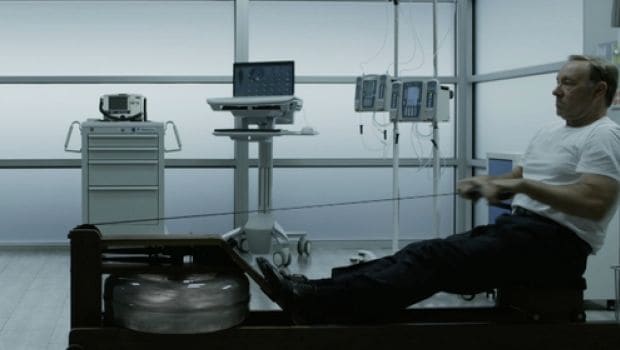Want a Full-Body Workout? Try a Rowing Machine

Shoulders down, back straight, abs tight, Fola Awosika instructed during a Foundations class at RowVigor in Arlington, the Washington area’s first pop-up rowing studio. Then: “You want your legs to do the bulk of the work.”
Wait, what? “Your legs are the strongest part,” he explained, despite the commonly held belief that rowing is all about the upper body. In fact, rowing engages 86 percent of muscles, an English Institute of Sport study found.
Rowing is obviously not a new sport, but interest in indoor machines is growing. One reason is increased visibility: Rowing machines are part of the popular functional (read: core-focused) fitness programs at CrossFit and Orange theory Fitness. Another is that rowing on the water has its limitations: weather, convenience and price, for instance.
Rowing can also be intimidating, added Toni Kerns, vice president of membership for Capital Rowing Club. “People think it’s all upper body and that you have to be this super strong person to do it, but really rowing is really low-impact on the body so you can be 90 pounds and a fast rower,” Kerns said. “You don’t have to be this big, bulky, strong dude.”
Awosika is one of three partners who opened RowVigor in August with nine rowing machines, also called “ergs,” and a desire to ride the wave of growing interest in rowing. The number of people who used a rowing machine at least once in a year increased to 10.1 million in 2016, up from 9.8 million in 2015 and 9.5 million in 2010, according to the Sports and Fitness Industry Association’s 2016 Tracking the Fitness Movement Report.
Makers of the machines are seeing increased demand from gyms. WaterRower, a 28-year-old manufacturer, has tripled production in the past five years, said David Jones, the company’s North American sales and marketing director, and now makes upward of 1,000 a week.
“Historically, I don’t know why people haven’t used them. It’s a great exercise,” Todd Miller, director of George Washington University’s Weight Management and Human Performance Lab, said of rowing machines. “The vast majority of aerobic exercise that people do – treadmills, cycling, steppers – all that stuff is primarily lower-body exercises. It doesn’t really engage the upper-body musculature, so rowing does that. I think that’s the best thing about it.”
Plus, it’s low-impact, meaning it doesn’t jolt the joints, Miller added. That also makes it more appealing – and accessible – to people of all fitness levels.
Another reason to try rowing? The return on your time investment. A 170-pound person doing moderate work on a rowing machine can burn about 270 calories in 30 minutes – the same amount as on a stationary bike, only rowing works more muscles.
A fourth draw: a healthier heart. A cardiologist studying how astronauts’ hearts atrophy in space found that 30 minutes of rowing (or 90 minutes of cycling) kept them healthier.
Despite all these benefits, rowing machines on the gym floor haven’t seen much use in recent years, Miller said. One reason could be marketing. “If you go into the club and you have 10 treadmills and you have one rower, odds are treadmills are going to become more popular,” he said.
Another reason is that proper rowing form is not as innate as, say, walking on a treadmill. “It’s not just getting on and going back and forth on the machine. It’s how hard you push and how you do the technique,” said Michael Heisey, who has been leading rowing classes at Gold’s Gym in Woodbridge, Virginia for 15 years. Plus, “it’s pretty boring by itself, but when you’re in a group and you’ve got music and you’ve got somebody like me pushing you, it makes people work harder.”
That’s also what Awosika hopes participants in RowVigor’s beginner class take away. During the 30-minute session, Awosika alternates between work on a rowing machine and a yoga mat. He sets target stroke rates, or number of strokes per minute, and wattage, or power, for rowers to meet during four- to five-minute sets. Rowers start by maintaining a stroke rate of 20 to 24 with a wattage of at least 100 and work up to a rate of 26 to 30.
Between sets, rowers hit the mats for ab moves such as pike thrusts – going from a plank to downward dog and back again – which “help you learn to engage your core as you row,” Awosika said.
[“source-ndtv”]